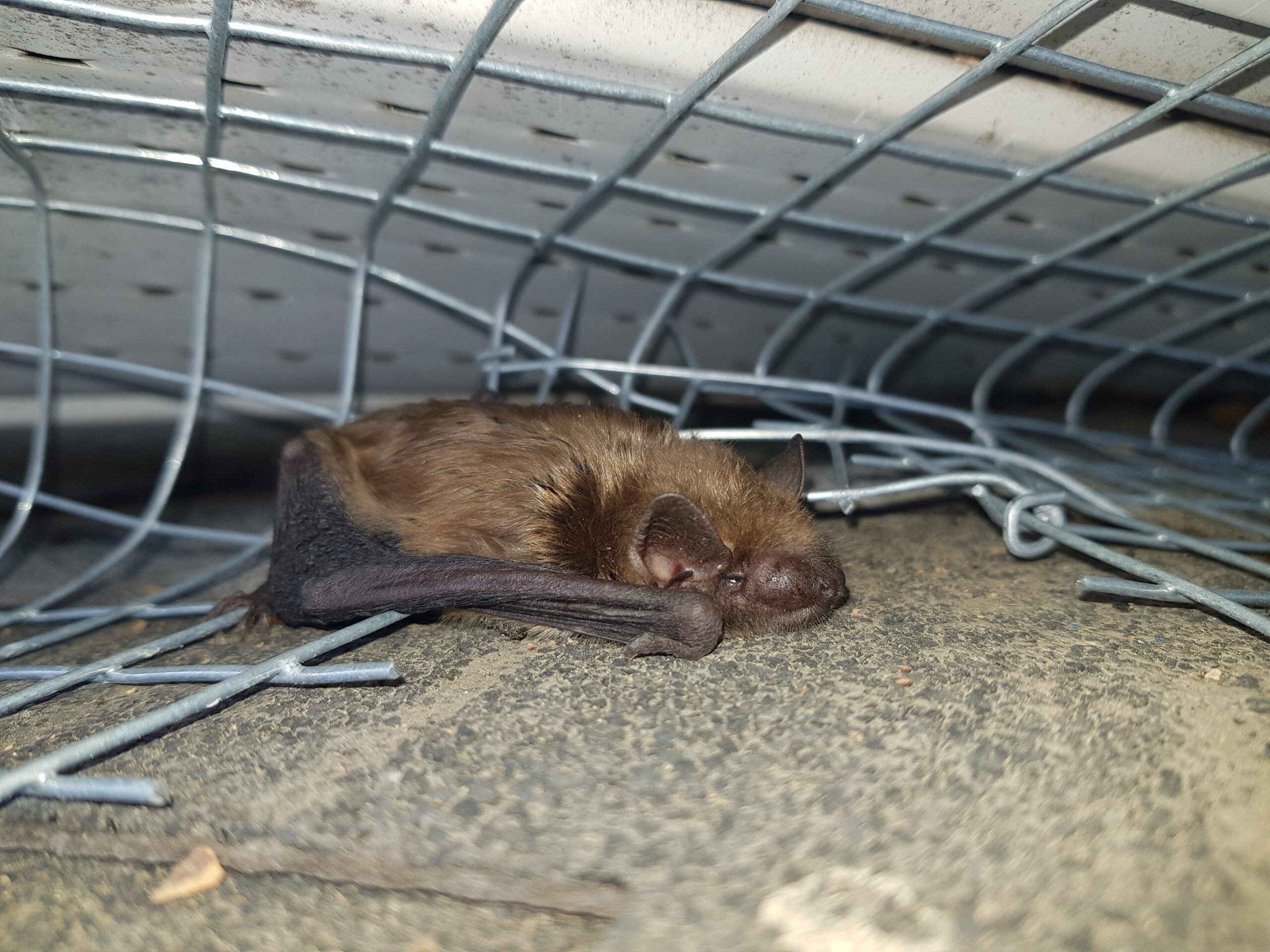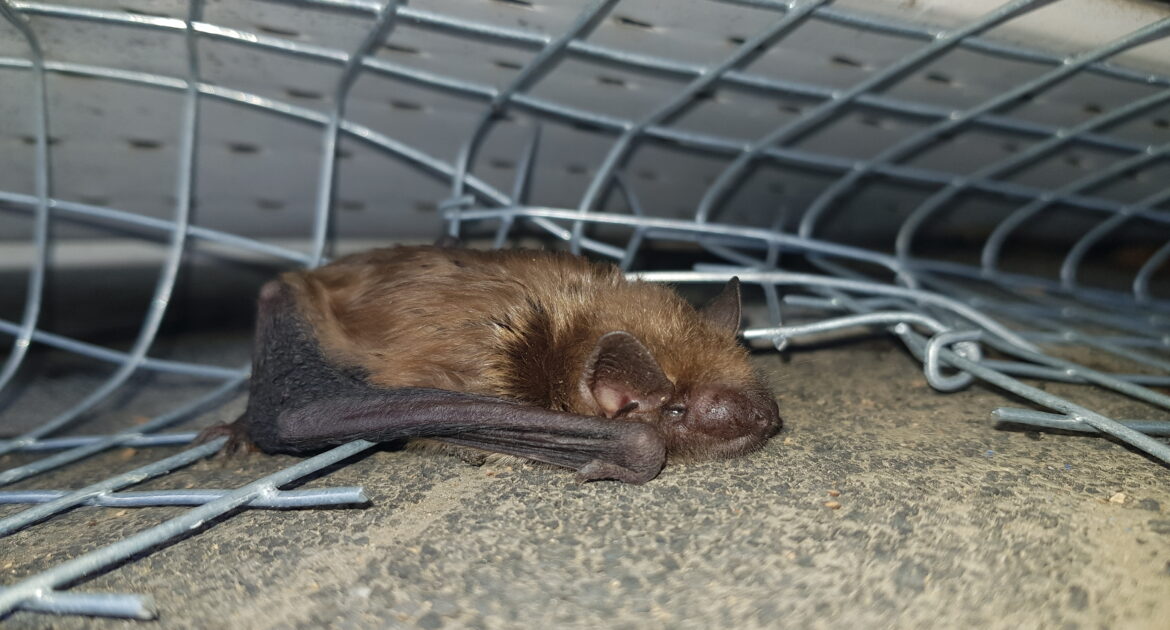For homeowners, encountering wildlife on your property can be both exciting and daunting. While some creatures are welcomed guests, others can pose a serious threat to you and your loved ones. Bats, in particular, are commonly found living in attics, eaves, and other parts of homes. While they may seem harmless, they carry a variety of diseases and can create significant damage to your property. That’s why it’s crucial to take action as soon as you suspect a bat infestation.
But what can you do? Are bats dangerous? How do bats get in a house in the first place? This blog post from the experts at Skedaddle will cover everything you need to know about bat removal in Prince Frederick. Read on to find out how to protect your family and property from these unwanted visitors.
Are Bats Dangerous?
Indeed, they can pose a risk to both your health and property. While they have their role in the ecosystem, such as controlling insect populations, their presence in your home can be quite concerning. Understanding the dangers associated with them is the first step towards proactive wildlife control.
Health Risks
An immediate concern associated with bats living on your property is the health risk they pose. They are known carriers of several diseases that can be harmful to humans.
- Rabies: They are one of the most common carriers of the Rabies virus. Their bites or exposure to their saliva can transmit this fatal disease.
- Histoplasmosis: This is a respiratory disease caused by the Histoplasma fungus, which can grow in droppings. Inhalation of spores from such a fungus can lead to this disease.
Property Damage
Aside from health risks, their presence can also lead to significant property damage. This damage can be both structural and cosmetic, leading to costly repairs.
- Structural Damage: They often nest in attics, eaves, and crawl spaces. Their constant scratching and guano (droppings) can undermine the integrity of the structure and stain the walls and ceilings.
- Cosmetic Damage: Accumulated guano and urine can seep into the flooring or walls, leading to unpleasant staining and smell. This not only looks unsightly but may also reduce your property’s resale value.
Understanding these dangers can help you take the appropriate steps toward protecting your property and health. Remember, they are protected by laws in many areas, so it’s important to approach removal with knowledge and caution.
How do Bats Get in a House?
First and foremost, it’s important to understand that they are agile and skilled creatures. They have a knack for finding small openings and exploiting them to access warmer and safer areas, like attics and rooftops. But how do they get into your house?
Roof and Attic Access
They often gain access to homes through rooftop and attic spaces. Their small size and agile nature enable them to squeeze through tiny gaps as small as a half inch. Spaces like loose or missing roof shingles, gaps around chimneys or vents, and openings in eaves or soffits provide potential entry points for them.
Openings and Cracks
Openings in your home’s facade, like cracks in the walls or gaps around windows and doors, are also a common entry point. They can squeeze through these spaces too. Over time, a small ensemble can expand into a full-blown colony if left unchecked. Regular maintenance can help identify and seal off these potential entry points.
Holes In Screens and Vents
Are your screen doors or windows torn? Is there a vent cover missing or damaged? Bats find these as inviting entrances to your sanctuary. They are often attracted by the warmth and darkness inside the vents. Regular inspection and prompt repairs can prevent such an occurrence.
Understanding how they get in a house is the first step in preventing their infestation. Remember, prevention is always better than cure. Keep your space well-maintained to ward off unwanted bat guests. Spotting potential entrances early on can save you from costly damages and health risks down the line.
Common Signs of Bat Infestations
Recognizing an infestation as early as possible can help mitigate potential health risks and damage to your property. There are some common signs to keep an eye out for.
Guano or Bat Feces
The most notable sign of an infestation is the presence of guano or feces. These are generally small and dark, much similar to the size of a rice grain. These droppings can be commonly found near the entrance of their roost and below the places where they roost. While it might seem a harmless sign, an accumulation of guano can lead to the growth of Histoplasma capsulatum fungus, which causes health issues in humans.
Noisy Chirping and Rustling Sounds
Near dusk or dawn, you may hear unfamiliar sounds of movement or even chirping within your walls or attic. This can be indicative of nesting and moving within your property. As they are nocturnal, these sounds are especially noticeable during the quiet of night.
Unusual Odour
A notable sign of an infestation is an unusual, persistent odour that can happen over time due to guano or urine accumulation. If you’ve noticed an unfamiliar, musty smell emanating from your attic or wall cavities, it could suggest an infestation.
Sighting of Bats
Another straightforward sign is the sighting of bats flying in and out of your property at dusk or dawn. Also, finding one in your living space could suggest a colony residing in your home.
In conclusion, It’s always better to reach out to professional wildlife control such as Skedaddle Humane Wildlife Control, if you suspect an infestation. They can conduct a comprehensive home inspection and make sure to handle the situation humanely and properly.
How to Humanely Remove Bats with Skedaddle
Living among nature’s creatures can be exciting, but it can also pose various health risks and property damages if not properly managed. Fortunately, you can rely on wildlife control specialists, such as Skedaddle, to humanely remove bats from your property. Let’s talk about how that’s done.
Inspection and Assessment
The first step Skedaddle takes in their humane removal process is a thorough inspection of your property. Skilled technicians inspect your attic, garage, and other areas to identify the colony’s size and determine their entry and exit points. These insights allow the team to develop an effective and customized eviction strategy.
Humane Removal
Armed with an effective strategy, Skedaddle’s wildlife technicians then proceed with humane removal. They accomplish this by using one-way doors. These contraptions allow bats to exit your property for their nightly hunt for insects but prevent them from re-entering. It’s a win-win scenario: they continue their regular routines, only now they won’t be able to access your home again.
Preventing Future Intrusions
Skedaddle doesn’t just stop at removing them from your property; they also take measures to prevent future infestations. They achieve this by sealing previously identified entry points and installing bat-proofing devices where necessary. Rest assured, Skedaddle’s techniques are not harmful to these beneficial creatures.
Site Cleanup
After they are removed and your property is secured, there is still the task of dealing with the mess left behind. Guano and urine can cause health risks if not properly cleaned. Skedaddle ensures a thorough cleanup, carrying out a detailed sanitization process to eliminate any potential dangers to your health.
Conclusion
In conclusion, dealing with bats isn’t a do-it-yourself project. They are a protected species in many areas and any removal and cleanup must be done following the local regulations. By opting for Skedaddle’s professional, humane, and efficient services, you can ensure the safety of your property and the bat population in your area.
Don’t let infestations endanger your home and health or wreak havoc on your peace of mind. Call on Skedaddle today for a thorough, humane, and highly effective solution. Your property, family, and bats deserve the best care possible.




